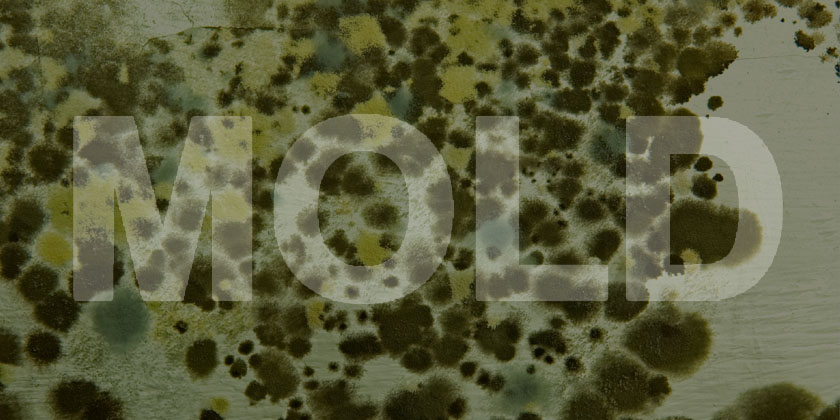
You can find many different types of mold in facilities. Each of these molds can cause different types of health issues, it all depends on the type of mold one is exposed to. Although there are as many as one-hundred (if not more) different types of molds that can be found in your facility, here we will only be discussing some of the more common types.
Different Types Of Mold:
Alternaria:
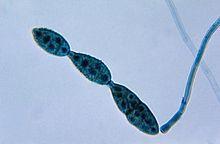
Alternaria Mold Photo – Wikipedia
This type of mold can be found outside of your facility as well as inside. It grows in areas that are damp, such as the bathroom, under leaky sinks or pipes. It is usually found inside facilities that have flooded before or received some type of serious water damage. This type of mold tends to spread, it can start on one end of the facility and spread to the other end of the facility all by itself. Those exposed to this type of mold can have allergic reactions and/or asthma attacks.
Acremonium:
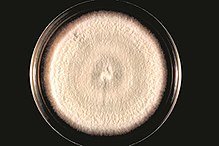
Acremonium Mold Photo – Wikipedia
This type of mold is a toxigenic type of mold. It evolves in appearance overtime starting out little and moist, turning into fine powder. It’s often white, orange, grey or pink in color. Acremonium grows in areas with high condensation areas.
Aspergillus:
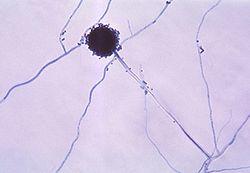
Aspergillus Mold Photo – Wikipedia
This is a type of mold that is commonly found inside facilities. This type of mold can cause one to have allergic reactions, hypersensitivity pneumonitis (this can cause inflammation in the lungs), and respiratory infections.
Aureobasidium:
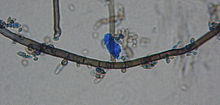
Aureobasidium Mold Photo – Types Of Mold – Wikipedia
Aureobasidium is a type of mold that is usually found outside of your facility, however, it can also be inside the facility. It grows on wooden surfaces, painted surfaces, and on wallpaper too. It can be found in window frames, and in caulking. This type of mold will be pink and black in color. There are a lot of people allergic to this type of mold.
Black Mold
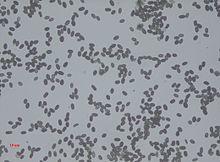
Black Mold Photo – Wikipedia
Black mold is also called Stachybotrys chartarum feeds on organic materials and can release sports after eating wet sub-flooring, insulation, carpet or drywall. These mold spores can cause dangerous symptoms in humans.
Botrytis:
This type of mold grows where there is a high level of humidity, such as bathrooms that does not have any type of ventilation. It can cause allergic reactions, as well as asthma.
Chaetomium:
You will find this type of mold growing on drywall that has had water damage and it carries a musty odor to it.
Cladosporium:
Cladosporium is a type of mold can be found inside the facility. It is one of the few mold types that can also grow in cool temperatures, whereas, most types of mold grow in warmer temperatures. It grows in places like fabrics, such as carpets, it also grows on wood surfaces, such as floorboards and cabinets. This type of mold can cause many different respiratory issues.
Efflorescence
Efflorescense is actually a salt deposit that is often confused with mold.
Fusarium:
This is a type of mold that also can grow in cooler temperatures. It can be found on water damaged carpets and other fabrics that has had water-damaged. It can cause numerous health issues, such as allergic reactions, respiratory infections, and asthma. Anyone with a weak immune systems are more vulnerable to infections when exposed to this type of mold.
Mucor
This type of mold is an allergenic mold type that grows in thick patches. It’s colors range from grey to white and usually grows pretty quickly. You will find this type of mold near high condensation areas such as air conditioning units. Mucor can cause health problems as worsen asthma conditions.
Penicillium:
This type of mold is found growing on water damaged materials, including wallpaper, mattresses, carpeting, and insulation. It is another type of mold that can begin on one end of a facility and quickly spread throughout. Those exposed to this type of mold can have allergic reactions, inflammation in the lungs, and chronic sinus infections. This type of mold will usually be blue and/or green in color.
‘Stachybotrys Chartarum’:
This type of mold is what is referred to as Back Mold. It has a slimy black look to it. This is the mold we think of when we think of toxic mold, however, it is not the mold that is toxic, but it does produce compounds that are toxic. The toxic compounds black mold produces is referred to as ‘mycotoxins’, coming into contact with these compounds can cause some very serious health problems, such as allergic reactions, chronic sinus infections, breathing issues, fatigue, asthma attacks, and even depression. It carries a musty odor, grow in areas that are always damp, such as air-conditioning ducts or leaky pipes, this is due to the increase in condensation in these places. Everyone should learn more about black mold that can invade their facility.
Serpula Lacrymans:
This is a type of mold that feeds on dry wood. It is yellow in color. This type of mold causes dry rot.
‘Trichoderma’:
This type of mold grows on damp surfaces such as wet carpets, wallpaper, and other surfaces that are damp most of the time. It is similar to Stachybotrys Chatarum, in that it produces the toxic compounds of ‘mycotoxins. It can cause the same health issues as the Stachybotrys Chatarum. Many people are also allergic to this type of mold.
Ulocladium:
This type of mold is found growing in places that has a lot of water damage and it needs a lot of water to grow. Found a lot growing on wet walls. Many people are allergic to this type of mold.
Efflorescence is a salt deposit that is sometimes mistaken for the white mold that grows in basements.
Professional Mold Removal Process
Dealing with mold problems in a home is one thing but dealing with mold problems in industrial facilities can be a catastrophe. It is important that you hire a professional mold remodiation company to help remove mold from your facilitiy. A professional mold removal company will do the following to get rid of mold:
- Use industrial equipment to dry the molded area: It’s very important to get your industrial facility dried out since mold grows in heavy condensation areas. The team will use HEPA air scrubbers, dehumidifiers and air movers to dry the air out.
- Seal the room off to contain the mold issue: Mold can become airborne so sealing off the molded areas is important to keep the mold contained to a single area or areas.
- Seal off the air coming out: Negative airflow helps ensure the air will flow in but not out. The area will be sealed with tape and plastic sheets to prevent mold spores from getting into the rest of your facility.
- Thoroughly clean remain items: If there is anything left in the facility it is important that is is cleaned. Fungicide will help clean and remove the remaining mold spores from materials and surfaces to prevent more mold from returning.
- Fix Water Damaged Areas: Once all of the mold has been removed the damage restoration process starts. Damage restoration includes repairing drywall, carpeting, flooring and more.
Do you know what type of mold you have growing in your facility?
There are professional mold testers to use for determining if your facility has mold growing inside of it. These testers can let you know what type of mold is growing in your facility as well. If you are interested in finding out just how much mold is growing inside your facility and if the problem might be much worse than you think it is you can bring in a professional that will be able to not only locate the mold, it origins, but also how far out of hand it has become. Native Enviromental Services can help remove mold from your industrial or commercial facility today!
Professional Mold Removal Services In Arizona
If you need professional mold removal in Phoenix, Arizona or anywhere else in the Metropolitan area, Native Environmental, LLC can help! Give us a call today at (602) 254-0122 for more information.
Contact Info
Native Environmental LLC
Address: 3250 S 35th Ave,
Phone: 602-254-0122
Hours: Monday – Friday 7:00am – 5:00pm
24 Hour Emergency Mold Removal Services
